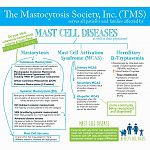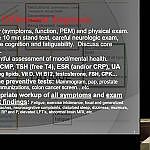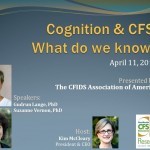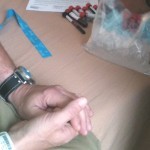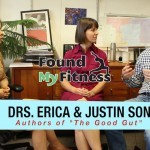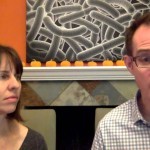Agents That May Increase Risk of Bleeding or Clotting
Agents reported to cause clinically significant bleeding in case report(s)
Garlic (Allium sativum), ginger, Ginkgo biloba, saw palmetto (Serenoa repens).
Agents that may increase risk of bleeding (based on evidence from basic science, animal study, human case reports/trials, expert opinion, or anecdote)
Acacia, acerola, aconite, agrimony, alfalfa (Medicago sativa)*, aloe, alpha-linolenic acid, alpinia, American ginseng (Panax quinquifolius), American pawpaw, Andrographis paniculata Nees, angelica (Angelica archangelica)*, angel's trumpet, anise (Pimpinella anisum)*, aniseed, annatto, aortic acid, arabinogalactan, arginine (L-arginine), aristolochia, arnica (Arnica montana), asafetida (Ferula asafetida)*, ashwagandha (Withania somnifera L.), aspen bark**, astragalus, avocado (Persea americana), babassu, banaba, barley, Bear's garlic, Bellis perennis, beta-sitosterol, bilberry (Vaccinium myrtillus), birch (Betula barosma)**, black cohosh (Cimifuga racemosa)**, black currant, bladderwrack (Fucus vesiculosis), blessed thistle, bogbean (Menyanthes trifoliata), boldo (Peumus boldus), borage seed oil, breviscapine, bromelain (Anas comosus), bupleurum, burdock (Arctium lappa), calamus, calendula, capsicum, cat's claw (Uncaria tomentosa), celery (Apium graveolens)*, chamomile (Matricaria recutita)*, chaparral (Larrea tridentate (DC) Coville, Larrea divaricata Cav.), chia, chlorella, chondroitin sulfate, cinnamon*, clove (Eugenia aromatica), codonopsis, coenzyme Q10, coleus (Coleus forskohlii), coltsfoot, cordyceps (Cordyceps sinensis), cowhage, cranberry, daisy, dandelion (Taraxacum officinale)*, danshen (Salvia miltiorrhiza), Datura wrightii, desert parsley, devil's claw (Harpagophytum procumbens), DHEA, diallyl trisulfide, dong quai (Angelica sinensis), echistatin, elder, EPA (eicosapentaenoic acid), evening primrose oil (Oenothera biennis)***, fennel (Foeniculum vulgare Mill.), fenugreek (Trigonella foenum-graecum)*, feverfew (Tanacetum parthenium)***, fig (Ficus carica), fisetin, fish oil***, flavonoids, flaxseed/flax powder (not a concern with flaxseed oil), forskolin, fucus, gamma-linolenic acid, gamma-oryzanol, Ganoderma japonicum, garlic (Allium sativum)***, genistein, German chamomile, ginger (Zingiber officinalis)***, ginkgo (Ginkgo biloba)***, ginseng (Panax spp.)***, globe artichoke (Cynara scolymus L.), goldenseal (Hydrastis canadensis L.), grape seed (Vitis vinifera), grapefruit juice, green tea (Camellia sinensis), ground ivy, guarana, guggul (Commiphora mukul), gymnema, gymnestra, hawthorn, heartsease**, hirudin, holy basil, horny goat weed, horse chestnut (Aesculus hippocastanum)*, horseradish (Radicula armoracia), jackfruit, jequirity, jiaogulan, juniper, Kan Jang, kava, kelp, kinetin, kiwi, kudzu, lady's mantle, Lathyrus, lavender, lemongrass, leopard's bane (Arnica montana), licorice (liquorice) (Glycyrrhiza glabra)***, ling zhi, lotus, lovage root, male fern (Dryopteris filix-mas), marjoram, meadowsweet (Spirea/Filipendula ulmaria)**, melatonin, methylsulfonylmethane (MSM), mistletoe, modified citrus pectin, mugwort, mullein, nettle, niacin, nopal, nordihydroguairetic acid (NDGA), northern prickly ash, octacosanol, omega-3 fatty acids, onion, oregano, pagoda tree, pantethine, papain, papaw, papaya, parsley (Petroselinum crispum), passion flower (Passiflora incarnata), PC-SPES, peony, policosanol, polypodium, poplar**, populus, prickly ash (Zanthoxylum spp.)*, propolis, PSK, Pycnogenol® (Pinus pinaster ssp. atlantica), quassia (Picrasma excelsa)*, quercetin, quinine, red clover (Trifolium pratense)*, red yeast rice, rehmannia, reishi (Ganoderma lucidum), resveratrol, rhubarb, Roman chamomile, rose hip, rosemary, rue, rutin, safflower, sage, sarsaparilla**, sassafras, savory, saw palmetto (Serenoa repens), schisandra, scotch broom, sea buckthorn, seaweed, selenium, SHA-10, shea, shiitake mushroom (Lentinus edodes), Siberian ginseng (Eleutherococcus senticosus), sorrel, southern prickly ash, soy***, Spanish bayonet (Yucca spp.), spirulina, St. John's wort, star anise, stinging nettle, strawberry, sweet birch**, sweet clover (Melilotus spp.)*, sweet marjoram, sweet woodruff, tamanu, tamarind, tarragon, taurine, tea, thyme, tonka bean, turmeric (Curcuma longa), usnea, vanilla, verbena, vitamin A, vitamin C***, vitamin E***, wasabi, watercress (Nasturtium officinale), wheatgrass, wild carrot, wild lettuce, willow, willow bark (Salix spp.)**, wintergreen**, yarrow, yew, yohimbe.
Possible pro-coagulant herbs and supplements (based on evidence from basic science, animal study, human case reports/trials, expert opinion, or anecdote)
Abuta, acerola, aconite, African wild potato, agrimony, alfalfa, annatto, apricot, arnica, astragalus, bael, bilberry, black haw, blessed thistle, cat's claw, chlorella, coenzyme Q10, cordyceps, DHEA (dehydroepiandrosterone), dong quai, ginseng, goldenrod, goldenseal, guggul, horsetail, jequirity, jiaogulan, lime, melatonin (multiple cases of prothrombin time (PT) reductions in patients on warfarin, some with minor bleeding possibly due to warfarin), milk thistle, mistletoe, myrcia, nopal, Panax ginseng (may decrease anticoagulant effect of warfarin), psyllium, raspberry, rhubarb, sage, scotch broom, shepherd's purse, skunk cabbage, stinging nettle, tamanu, tea, white oak, white water lily, yarrow.
Vitamin K-rich foods or herbs that may decrease anticoagulant effects of warfarin (Coumadin®) (based on evidence from basic science, animal study, human case reports/trials, expert opinion, or anecdote)
Beet greens, Bolthouse® Bom Dia Acai Berry With Blueberry Juice, broccoli, Brussels sprouts, collard greens, dandelion greens, endive, green pepper, kale, mustard greens, okra, red leaf lettuce, sauerkraut, spinach, spring onions, Swiss chard, turnip greens, white cabbage.
NOTE: Because passionflower, hydroalcoholic extracts, juniper, and Verbena officinalis supply variable quantities of vitamin K, they may lessen the effect of oral anticoagulant therapy.
NOTE: This is not an all-inclusive list.
* Agents with coumarin constituents.
** Agents with salicylate constituents.
*** Agents that inhibit platelets.
Copyright © 2012 Natural Standard. All Rights Reserved.



